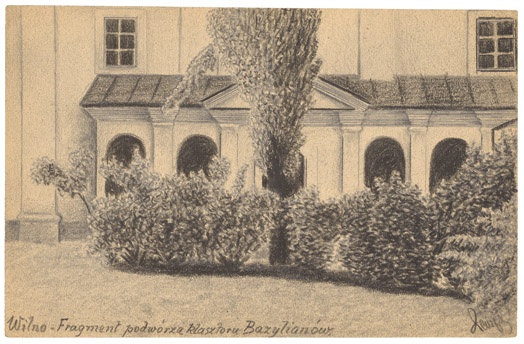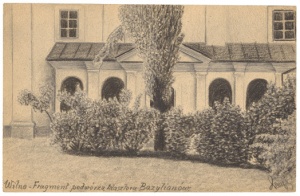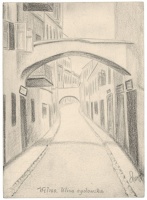An arcade with a portico depicted in M. Paczyński ’s work belongs to the Basilian monastery, famous for its Baroque gateway that was designed by the architect Johann Christoph Glaubitz. Paczyński’s amateurish drawing portrays the intimate courtyard of the monastery, with an arcade lined with bushes. The modest subject was not chosen by accident. This place beside the Basilian Church of the Holy Trinity is special in the history of the city. The Basilian church and monastery were the centre of the Uniates, who in the 17th and 18th centuries combined two different branches of Christianity, Orthodox and Roman Catholic, in the Grand Duchy of Lithuania. The Russian Orthodox Church resisted the union, and after the partition of the Polish-Lithuanian Commonwealth, the Uniate Church was dissolved and the Basilian monastery was closed. One wing of the monastery was turned into a prison, where rebellious Vilnius University students, members of the society of Philomaths, were held in 1823 and 1824. Among them was the poet Adam Mickiewicz, who described his prison cell in the poem Dziady (Forefathers’ Eve). Since then, the place has had an aura of martyrdom, immortalised in art.
Source: Law firm Valiunas Ellex art album
VILNIUS. TOPOPHILIA I (2014). Compiler and author Laima Laučkaitė












